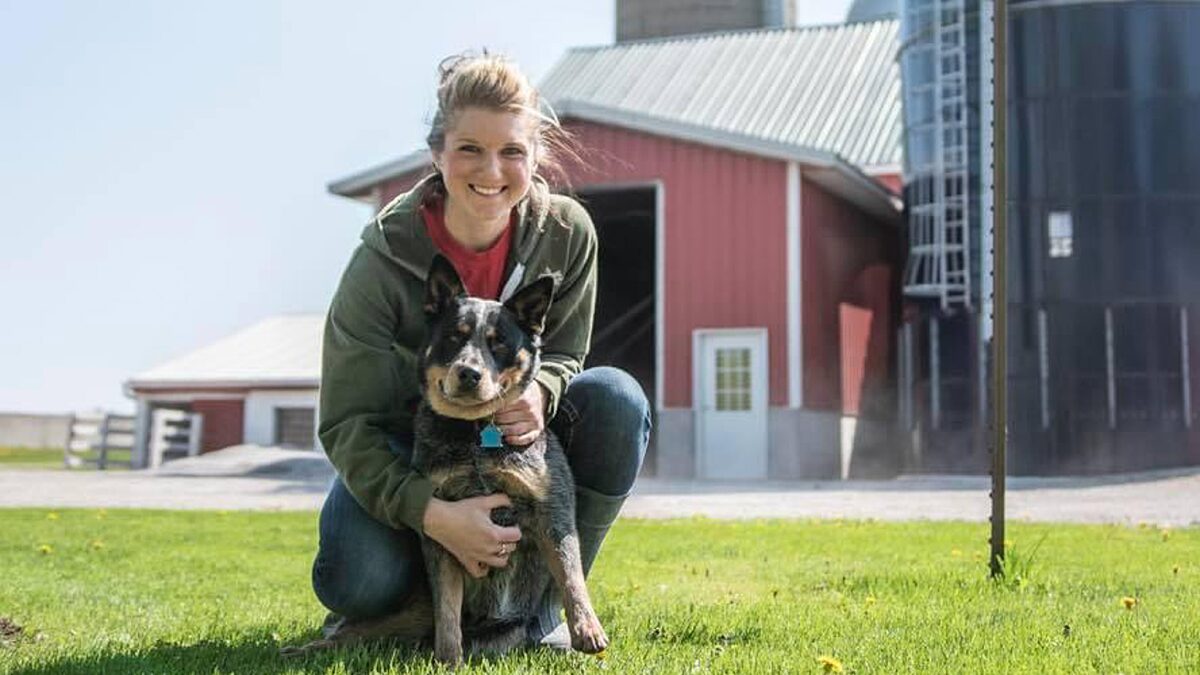Let’s Talk About Buying Local
Brittney Muenster

photo credit: Dan Hagenow, Used with Permission
Brittney Muenster
From making connections in your community, to gaining knowledge of where food comes from, to boosting local commerce, the benefits of buying locally are endless.
As a farmer, providing safe and affordable food to my community is a priority. Since my family farm was founded in 1874, we’ve acquired a magnitude of experience in food production. Over time the markets we sold our products to moved us away from direct contact with our customers. More people have become involved in the process between the farm and plate. How did this happen? It wasn’t overnight, of course, and many times these things are out of our control as farmers. To continue to provide for our family and keep our business running, we’ve had to adjust and adapt.
The market trends for food purchasing have changed once again. Our customers want to know where their food comes from and place value on the relationship with their farmers. As a farmer, this has been a great opportunity to rebuild the connections we lost with the families who purchase our products.
How has my family farm done this? A year ago, we wanted to find a way to directly link our farm to our community. My family opened a meat market on our farm, and it has been an endlessly rewarding experience. We converted an existing, unused space on our farm into a store. By having minimal startup costs, we can keep our prices affordable and by selling our product direct to our customers, we also maintain consistent prices allowing families to buy in bulk and budget more efficiently.
Farmers look forward to answering questions and providing information to consumers.
Many farmers are focusing on direct-to-consumer sales. Whether at a farmer’s market, online or on-farm store, there are an increasing number of opportunities to buy local and support farmers. How can you find these farmers? Many of them advertise on social media and in groups specific for marketing their goods.
I should note that you don’t have to visit a farm to support your local farmer (although always encouraged). Many grocery stores carry local produce and products. A good example is milk, which takes less than 48 hours to travel from the farm to the grocery store. If you want to support local businesses look for certified seals on the labels that signify that item is being sourced locally.
Farmers look forward to answering questions and providing information to consumers to make well-informed decisions when grocery shopping for their families. Because we don’t always get the opportunity to connect with our customers directly, being a part of organizations like Farm Bureau allows us a platform to share what we do and develop valuable tools to help explain what is truly going on at the farm level. In my home state, Gather Wisconsin is a great resource for consumers looking for information about agriculture and opportunities to support farmers locally. All state Farm Bureaus maintain websites with useful information on what foods are in season, farm tours and much more. Visit http://Fb.Org/About/Join to find your state Farm Bureau.
Brittney Muenster is a fifth-generation family farmer and Farm Bureau member in Wisconsin who raises cattle for beef and milk production. She serves on Wisconsin Farm Bureau’s Promotion & Education Committee. In addition to farming, she’s an independent insurance agent specializing in farm and agribusiness insurance with Family Insurance Center. This column was originally published by Wisconsin Farm Bureau and is republished with permission.
Trending Topics
VIEW ALL